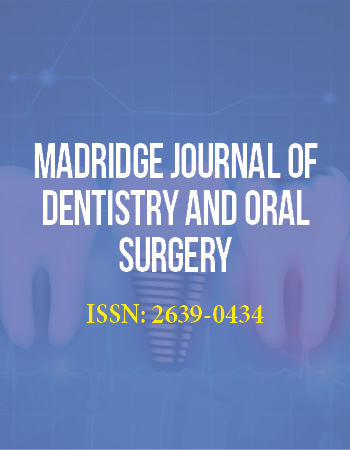International Conference on Dentistry
April 3-5, 2017 Dubai, UAE
Biomimetic oral appliance therapy as a possible solution for obstructive sleep apnea
BioModeling Solutions, USA
Various modalities are available for the treatment of obstructive sleep apnea (OSA), including: continuous positive airway pressure (CPAP), surgical interventions, and mandibular advancement devices (MADs). A 54 year old male reported to our office with symptoms of daytime sleepiness. Screening for OSA, he scored 15 on an Epworth sleepiness scale (ESS). This screening was followed by a home sleep study (HST), which demonstrated an AHI of 27hr-1 with 13% of total sleep time in REM, and a mean oxygen desaturation nadir (SpO2) of 86%. Craniofacial and intra-oral examination revealed he had extensive, bilateral torus mandibularis with an intermolar maxillary bone width of 34mm. Therefore, treatment with biomimetic oral appliance therapy (BOAT) was discussed. BOAT differs from MADs in that it consists of simultaneous, non-surgical, midfacial redevelopment in combination with mandibular repositioning. After obtaining informed consent, the patient elected to undergo surgical reduction of the mandibular tori followed by BOAT, since these devices are FDA-approved. After 6 months of BOAT, he scored 2 on a follow up ESS. On intra-oral examination, it was found the intermolar bone width had increased to 36mm. Therefore, another HST was performed with no device in the mouth while sleeping, which demonstrated the AHI fell to 5.3hr-1hr; and he spent 27% of sleep time in REM sleep, with a mean SpO2 of 93% without any appliances in the mouth. These findings suggest that BOAT may represent a potential cure for OSA. However, long term follow-up is warranted to ensure that the current sleep quality is maintained.
Biography:
Prof. Dave Singh is a US citizen who was born, educated and trained in England, UK. He holds three doctorates (from the universities of Newcastle, Bristol and Dundee, UK). He is a member of the World Association of Sleep Medicine and Fellow of the World Federation of Orthodontists. He has about 200 publications in the medical, dental and orthodontic literature. Previously, he was Visiting Professor at University of Michigan and University of Hawaii, USA. In addition, at the Center of Craniofacial Disorders, UPR, he led a NIH-NIDCR funded program of research. Currently, he is the CEO of BioModeling Solutions, Inc.


